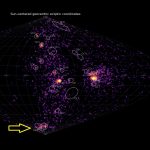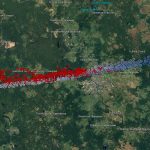“Who writes, who remains”
One of the major problems with amateur meteor work is that a lot of all observing efforts that have been done past two centuries have been lost forever because nobody bothered to publish these results or to archive publications. What we know today about amateur meteor work in the 19th and 20th century is what has been published in the past by dedicated amateurs. Long time ago meteor observing reports were systematically published in professional scientific journals such as the Monthly Notices of the RAS, the reports of the British Association for the Advancement of Science, etc. In the 20th century several amateur meteor observers started with amateur journals, often reproduced in a very cheap way, using stencil work or photocopies. The purpose was to share observing reports keeping costs as low as possible. For instance in 1980 the author changed the leaflet “Werkgroepnieuws” that had been started in 1973, typewritten with carbon papers for duplication, into the bi-monthly journal WGN reproduced with Xerox photocopies with a subscription fee of as little as 2 Euro per year, covering postage, envelopes and reproduction of over 200 pages with meteor reports per year. The existence of some specialized journals encouraged amateurs to share their observing results and these publications encouraged other amateurs to discover meteor observing.
Most of the amateur journals of the 20th century remained for only few years as these depended often on a single volunteer, some of these initiatives survived as an eZine (like the Dutch journal eRadiant) or WGN that became the IMO Journal after 1988. In recent years internet and mainly the social media such as Facebook offer a very easy alternative to share meteor results. However these media are not meant to serve as a kind of library and certainly not as an archive. What Facebook shows today is often difficult to find the next day and in general we can say that what is being shared on Facebook will not remain and is lost as if nothing had ever been published. Traditional journals are considered to work much too slow these days to share observing reports that people expect to read soon after the observations took place. Some journals also impose irritating slow and discouraging editing procedures. The compromise to combine the efficiency of the internet and the stability of a journal became eMeteorNews.
When eMeteorNews got started the plan was to have the contents listed with ADS Abstract Service. Of course we had to wait until eMeteorNews had enough contents to get listed. Meanwhile eMeteorNews got listed with ADS Abstract Service. You can consult the content: http://adsabs.harvard.edu/bib_abs.html?eMetN
To have your contributions well documented, make sure that you pay attention to have:
- A relevant title;
- An affiliation (address and/or e-mail) so that you can be contacted;
- An abstract as a short summary of the essential content;
- Good documented references if you refer to other publications.
Please have a look at the records for eMetN on the ADS Abstract Service website to see how posts can be improved to get a good documented record with ADS Abstract Service.






